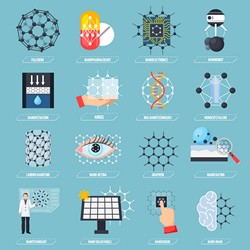European network of nanotechnology
DNA nanotechnology deals with the unique self-assembly properties of DNA, from nucleobases to large assemblies of hundreds of DNA strands. The designed nanoscale structures have predictable geometry and function and rely on the hybridisation of complementary base sequences to create the Watson-Crick double helix. Given that short nucleotide sequences can be chemically synthesised using computer-aided design, researchers can control their assembly properties. Furthermore, the chemical composition of DNA allows the insertion of specific modifications onto DNA, expanding its application. The purpose of the EU-funded ESCODNA(opens in new window) ITN network was to strengthen research in the field by training the next generation of nanotechnology researchers. Importantly, the consortium set the collaborative basis towards the establishment of connections between research groups and companies in this field. Researchers wished to incorporate other materials such as proteins in the DNA nanostructures to expand their functionality, and hence, applications. DNA origami-based force sensors were generated, which served as tools for studying the activity of DNA interacting with other molecules. The team synthesised a DNA vault that could contain proteins as well as control their function. Furthermore, the consortium succeeded in generating circular DNA strands, which were brought together into chain structures. Central to the role of DNA nanostructures in life science and medicine is the delivery of these complexes to cells. ESCODNA scientists investigated uptake of DNA nanostructures in cells by various mechanisms including their functionalisation with ligands capable of interacting with specific membrane receptors. The scientific activities of the network succeeded in the realisation of important achievements related to the design of functional and dynamic DNA nanostructures. The integration of other materials in DNA nanostructures will undoubtedly expand their applications including their exploitation as drugs or drug delivery vehicles. At the same time, the ESCODNA network built on the interdisciplinary and cooperative nature of the programme to train young researchers in the field of DNA nanotechnology.







